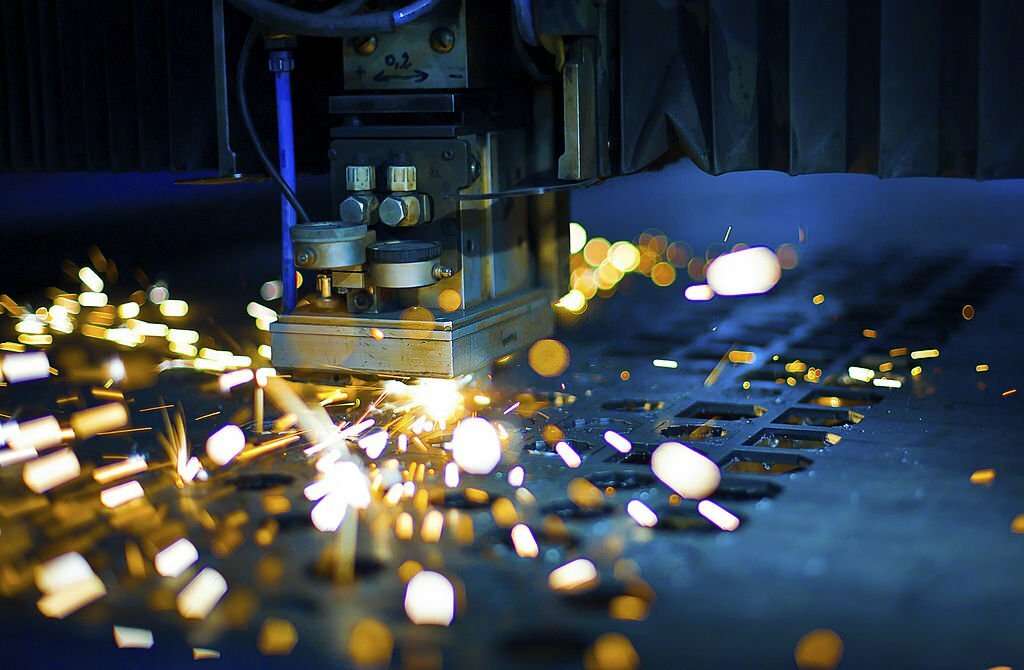
CNC laser cutting has become the most widely utilized machining technique for manufacturing many products. However, over the years, the market for laser-cut products has become much more competitive. New startups and entrants need the latest laser-cutting machines to gain a competitive edge in the market. Today's customer expects flawless products with top-notch finishing. Otherwise, they can switch to companies that give them what they want. Hence, choosing the correct laser-cutting machine is a decision that should be made carefully, as it can be the difference between the success and failure of a manufacturing business.
What makes a laser cutting machine special is the accuracy with which it can make cuts. The laser beam has a tiny diameter and can make a thinner hole than a hair. With such stunning accuracy, it is no surprise that the machine can cut highly complex shapes with ease and effortlessness, which is unimaginable for a human worker. Moreover, the laser cutting machine has a laser cutting speed of 150mm/s, which means it can work fast and save time, leading to higher productivity.
Another factor that helps in precise cutting is that the object to be cut does not need to be fixed since the laser does not contact the metal or surface being cut and does not generate any shock or vibration, unlike a cutting tool. Moreover, the laser also does not generate any soot or debris while cutting, and the risk of surface damage like chinks and deformation is minimal as there is no impact force of cutting tools that are commonly used in other machining techniques.
Laser Cutting machines are operated by software that can control various tools and automate the entire process, making the machine capable of cutting various materials. Moreover, these machines can carve the surfaces, creating truly beautiful and unique products.
Regarding maintenance, laser cutting machines have a low replacement cost as the laser tube has a long usage life of three years, and the fiber optic emitter can last 11 years.
Laser-cutting machines are versatile pieces of equipment that can cut a variety of materials, such as
Selecting the right type of laser-cutting machine is a decision that should be taken seriously by the manufacturer and he should have solid knowledge about various machine features offered in the market. Below are some crucial features that a manufacturer should consider when buying a laser-cutting machine.
Laser-cutting machines are available in two versions based on emitters. CO2 lasers and fiber lasers. The buyer must clearly know what materials he will work on. CO2 laser emitters are suitable for cutting non-metallic materials, namely:
Fiber lasers, on the other hand, are specifically used to cut different types of metals, such as
Using CO2 lasers to cut metals is impractical as the emitter has a wavelength that does not suit non-metallic materials.
The laser emitter power is crucial in setting the correct production and cutting speed in the production process. This can have a significant impact on the factory's productivity and efficiency. Generally, a thicker material requires a higher emitter power.
A typical CO2 laser-cutting machine design consists of mirrors that reflect the laser beam across various angles within the housing. As the laser travels through the air, it loses its power, and the greater the distance, the weaker the laser power. If the work area is large, the laser would lose power while traveling large distances. For instance, a work area with dimensions 600x900mm would need an emitter with a power of 40-120w.
In the case of fiber laser power, the thickness of the metal is the main determinant of laser emitter power. Generally, fiber lasers have higher power than CO2 lasers in the range of 1000w to 15000w. Doing proper research and examining tables of specifications of machines is vital to making the correct buying decision when it comes to deciding emitter power.
The manufacturer also needs a clear idea about the size of the raw material sheets used to manufacture the product. For instance, cardboard boxes require a large work area as they have a large surface area. Moreover, if the product is small, like a small toy, the area of work needed would be less; this can affect the production speed as a large work area would require less changing of the material, hence a faster operation speed.
Selecting the right laser-cutting machine involves carefully considering various factors, each crucial to achieving optimal results in specific applications. Understanding the material to be cut, desired precision, power requirements, maintenance needs, and budget constraints is pivotal in making an informed decision. Furthermore, assessing additional features such as software compatibility, cutting speed, and support services provided by the manufacturer adds another layer of importance to the selection process.